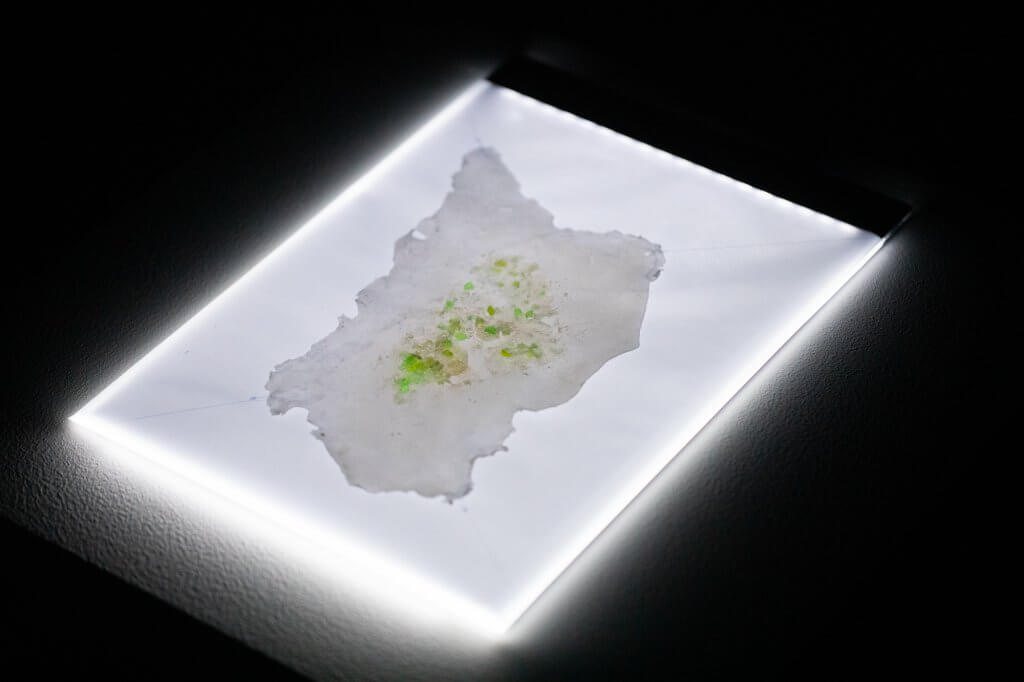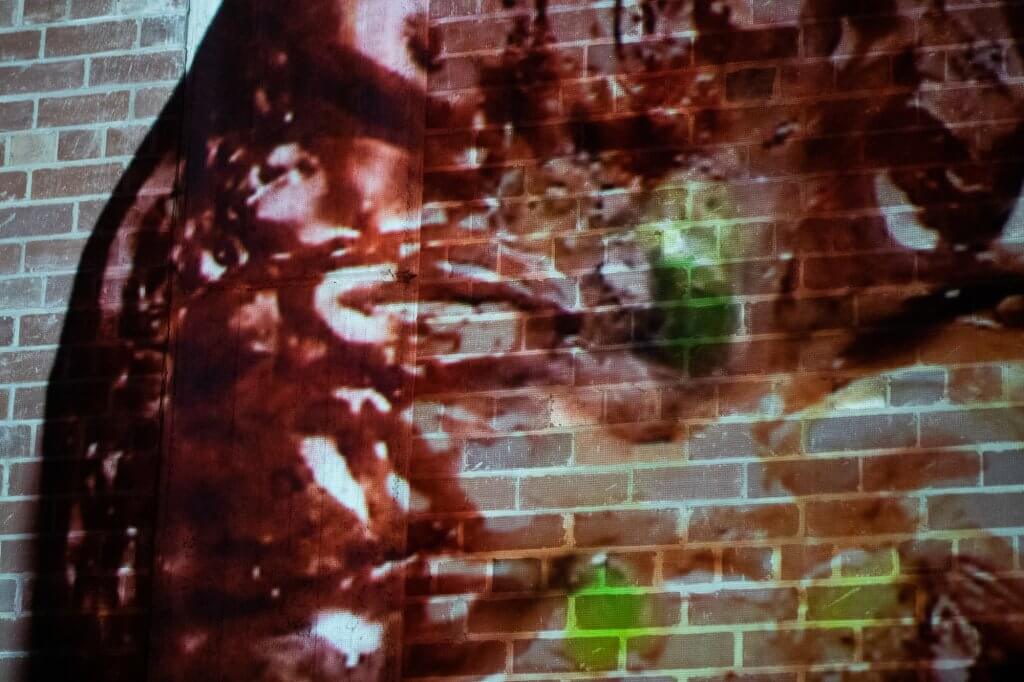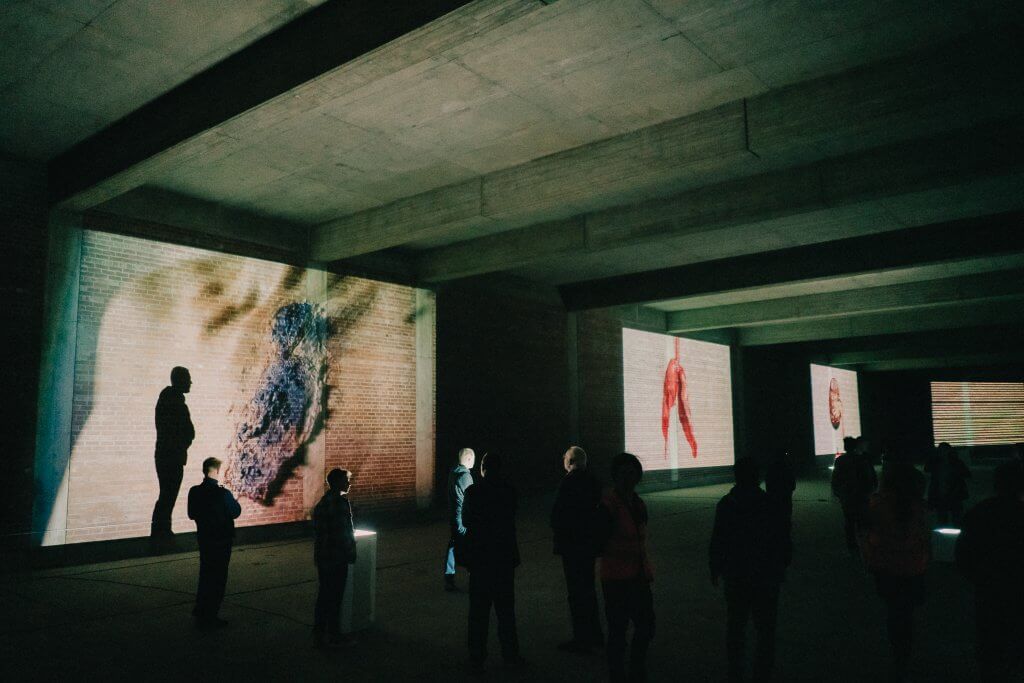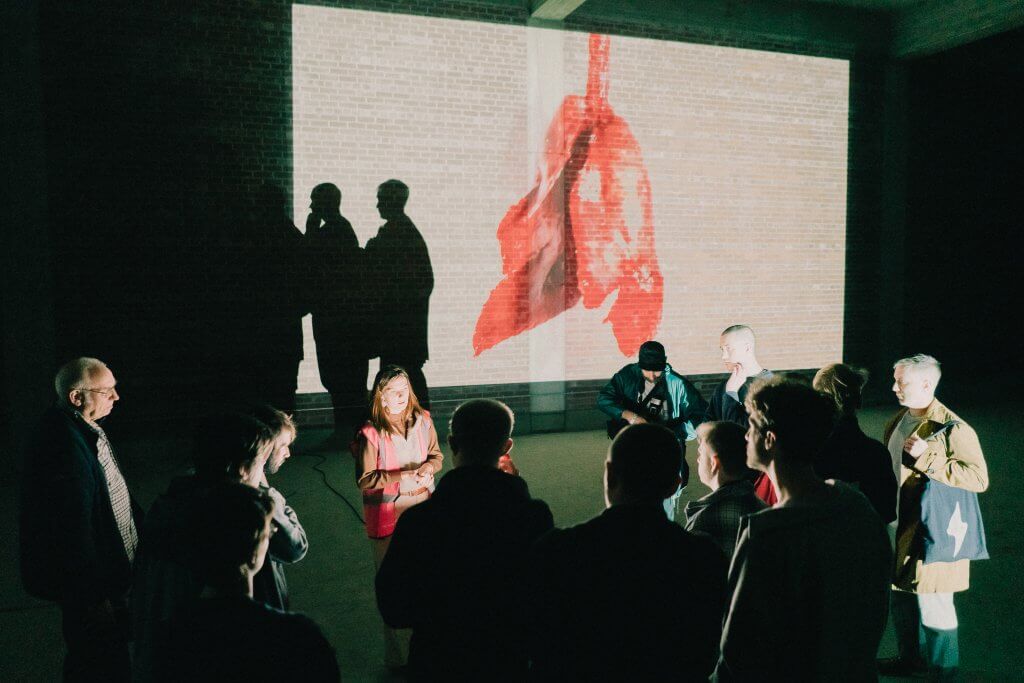This project questions and speculates on the impacts of the environment’s pollutants on our body. It uses storytelling and visuals to engage the audience into current environmental problematics and future bioethical debates.
Funded by: Research England and Da Vinci Labs
Team: Noémie Soula
Our world is changing rapidly, and the increasing pollution is not without impact on human lives. But can it also be one of the drivers of evolution? Or will pollution become an integral part of our bodies, sneaking into our DNA?
Mythical Living Data investigates and speculates on how creating chimaeras with natural and artificial data-based DNA could provide a storage solution and collect live data from the environment through genetic mutations. This project provides tools to engage in bioethical debates through storytelling and narration. More than providing solution, this work is provocative and stimulates audience imagination in rethinking our future as humans.
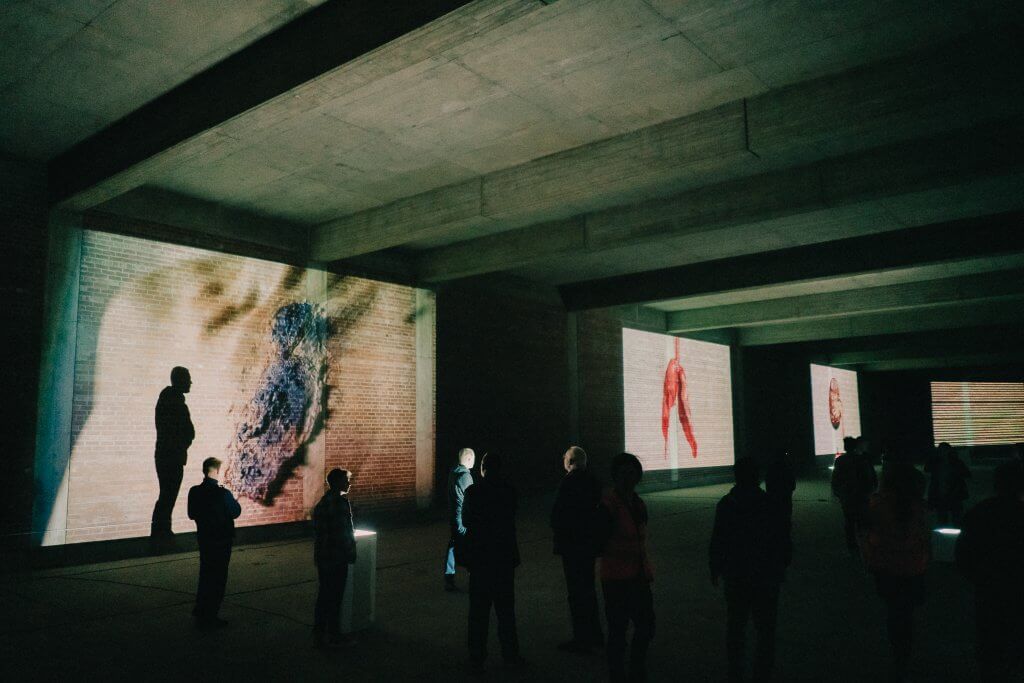
Background
Mythical Living Data is inspired by Philip K. Dick’s short story “The Preserving Machine” (1969), which tells the story of the collapse of Western Civilisation. The protagonist, Doc Labyrinth, invents a machine designed to preserve great music’s partitions by transforming them into living creatures.
I found this story very moving and thought-provoking. It inspired me to explore the connection between ethical concerns raised in the plot and current research on storing data as DNA. The tension between evolution and preservation, archiving and living, data and mutations pushed me to wonder:
What is conservation in terms of biology?
What are the ethical implications of preservation?
Are all beings (living or not, including viruses) on Earth already an expression of data?
What is that data telling us about our past and our future?
Data synthesis and chimaeras
The current research on storing data synthesis in DNA appears promising and more compacted than today’s hard drives but still requires facilities, maintenance, and energy (liquid nitrogen storage at -80°C in ethanol precipitate). Considering all this, I prospected that the most efficient way to store data as DNA would be embedding it into autonomous living systems. Those potential organisms will independently find their energy source to survive and will reproduce to sustain the data through time.
In genetics, a chimaera is an organism or tissue that contains at least two different sets of DNA. The term comes from the Chimera of Greek mythology, a fantastic being partly lion, goat, and reptile. The idea behind “Mythical Living Data” is to create chimaeras that are a form of storage for data about the environmental pollution levels (CO2, particulate matter in the air, heavy metals in the soil, microplastics in the ocean, etc.). Those chimaeras would also be capable of collecting live data about their surroundings, expressed thanks to genetic mutations.
Related news >> Noémie Soula selected as the winner of the LEONARDO REBOOTED: Synthetic Biology Award
Exploring Mythical Living Data
This research-driven artistic project visually explores how the chimaera-like creatures generated from data would look like and evolve in the habitat they are intended to live in. Thanks to storytelling and narration, the outcome of this project will be a series of critical artefacts representing the chimaeras. Using a critical and slightly dystopian perspective on the current research, I aim to provoke and provide tools to think differently.
In this project, I explored how DNA holds a data blueprint that makes living beings, how this DNA and the data it contains can often become changed, overwritten or deleted because of external factors. It is a decisive win for nurture over nature, for an anthropomorphic environment.
But when the DNA changes, it also becomes the permanent record of that change. It stores the new data, becoming a library of evolution.
What are the limits to the adaptation of living beings? Is anthropogenic-caused evolution something we want?
Can we explore this in a controlled setting by translating data on pollution or external factors into DNA change?
What will happen if we take it a step further and insert that modified DNA into a living organism?
Are we allowed to do that?
Exhibitions and conferences
- Exhibition: AIMDay Green Future, Innovaiton Conference, Sheffield Hallam University (September 2022).
- Exhibition: NO BOUNDS Festival, Moore St Substation, Sheffield, October 2022.
- Online exhibition on : https://www.mythicallivingdata.com/
Awards and Related news
- The Guardian 17 Oct 2022 : No Bounds festival review – unmissable weekend of music, art, technology and dance
- Sheffield Hallam University 7 Oct 2022: Sheffield Hallam artists to feature in No Bounds Festival
- 31 Mar 2022 Noémie Soula selected as the winner of the LEONARDO REBOOTED: Synthetic Biology Award
- The Codex: A Deeptech Review by Da Vinci Labs Q3 2022: https://www.davincilabs.eu/downloads/The_Codex_Q3_2022.pdf (p.8-9)
 to top
to top

